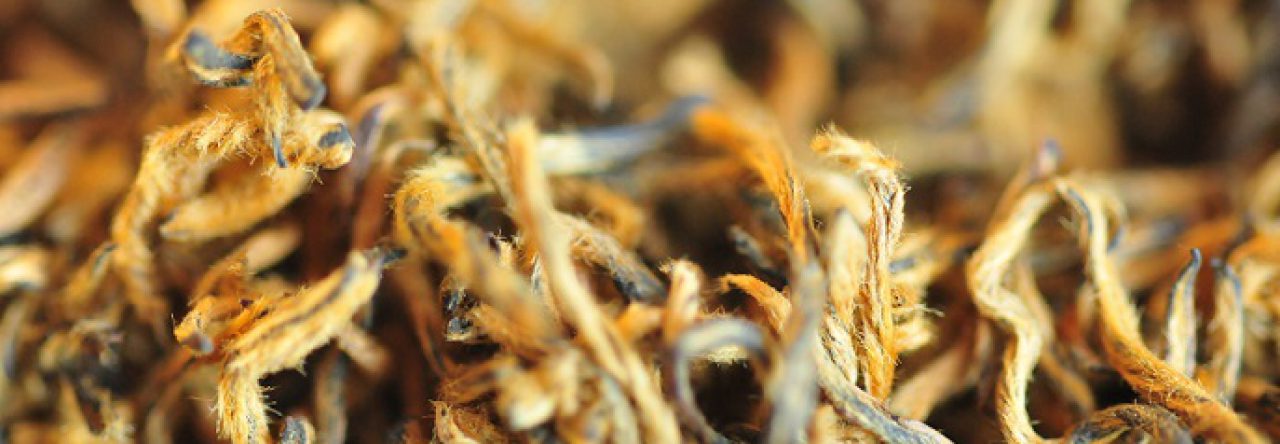 All those years, I’ve tried not too ‘critical’ to other tea ‘sommeliers’ or ‘traders’, but I was once again shocked by the information about Puerh tea from a Dutch web shop that my student Jess relayed to me by email which kept me awoke that I think it is necessary to point out some fundamental mistakes:
All those years, I’ve tried not too ‘critical’ to other tea ‘sommeliers’ or ‘traders’, but I was once again shocked by the information about Puerh tea from a Dutch web shop that my student Jess relayed to me by email which kept me awoke that I think it is necessary to point out some fundamental mistakes:
- First of all, since the name of Black Tea was used for Chinese Red Tea (紅茶), so now we can call Chinese Hei Cha (黑茶, literally mean Black Tea in Chinese) to Dark Tea. Puerh is in the category of Hei Cha (Dark Tea) but not Red Tea (Black Tea).
- But there is something unique about Hei Cha, because there are Sheng (生 means raw, green, not-full fermented) and Shou (熟 means ripped, full fermented), but one thing in common is these considered as ‘living and drinkable antique’, the flavor and taste are transformed according to the difference in post-fermentation process and the later storage.
- The brewing of Puerh is similar but again different from the brewing of other sort of tea
- The flavor and taste of Puerh from lower altitude vs. high altitude, bush-type vs. tree-type and the age of tea tree, from loose leaves to tea cake, etc. create a lot of diverse flavour and taste in Puerh
- Indeed the taste of Puerh is very smooth and gentle, especially those aged Puerh; but it shouldn’t be flat and boring, on the contrary it should be the first taste of smoothness, then with gentle after-taste that give your mouth a full body of faste afterwards with the closure of kind of sweetness on your tongue. Different post fermentation process and the period of time can influence the flavor of Puerh, some will develop a kind of earlthy woody note, but good quality Puerh, even Shou Puerh, won’t give a rotten rot flavor and struggling with the swallowing.
Out of curiosity, so I decided to pay a visit to that web shop as well and surprisingly have found more chaotic and unthinkable mistakes, here I just simply point out two Taiwan Oolong as example:
- Formosa Fine Oolong :
in the description, they introduced it as Black tea, then further it wrote, it’s semi-fermented tea. So is it a Oolong or black tea? Oolong is Oolong but not black tea. There are heavy fermented Oolong, but it is still Oolong but not black tea because the flavor and taste are not on the same parameters; certainly there are some strict and important evaluation parameters to define ‘fine’ Oolong tea.
- Formosa Oolong Thing Dong (Jade Oolong):
Jade Oolong is also known as Cui Yu in Chinese Pinyin, so what does it mean “Thing Dong”?? again is it a black or oolong? Indeed high mountain Oolong often is very light fermented, but how can black tea be non-fermented? Withering and fermentation processes are necessary for Oolong, so how can it be non-fermented?
I don’t question they treasure tea or not, but based on how they classify the tea category on their web site, I wonder how much they really know about tea. Frankly speaking, I have no idea where they learnt about tea but I would be very shamed if I were their teacher. There are simply TOO MUCH unthinkable mistakes that I really do not know how to correct them. The discovery from this web shop who mistook the Puerh as ‘red tea’ gave me a speechless evening.
One can’t distinguish the quality and the value of tea until s/he is willing to give her/himself a chance to taste the tea with an open mind for a life-time learning with tea. The learning starts from getting the fundamental information right as much as possible.

Leave a Reply
You must be logged in to post a comment.